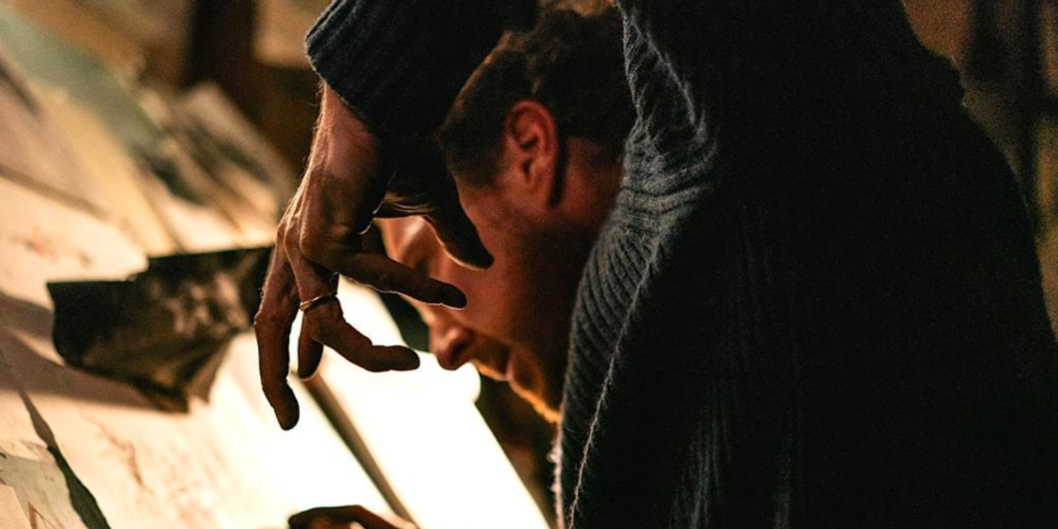Exploring Grief Through Art in ‘The Thing With Feathers’
Grief has long been a profound theme in the arts, prompting myriad interpretations in literature, visual art, and film. Works like When the Light Breaks, Coco, Ikiru, and A Ghost Story exemplify how creators have expressed complex emotions surrounding loss. The new film The Thing With Feathers, which debuted at the 2025 Sundance Film Festival, continues this tradition by delivering a deeply emotional exploration of mourning and the challenges of moving forward after loss.
What Is ‘The Thing With Feathers’ About?
The Thing With Feathers is inspired by the acclaimed novella Grief Is the Thing with Feathers by Max Porter. Written and directed by Dylan Southern, the film stars Benedict Cumberbatch as a character known simply as “Dad.” Recently widowed, he juggles the heavy burden of raising his two young sons, referred to as “The Boys,” after their mother suffers a tragic and accidental death. Cumberbatch’s character is not only an artist who creates graphic novels, but he also grapples with intense emotional upheaval, striving to maintain a semblance of normality amid overwhelming sorrow.
Central to the film’s narrative is the unsettling arrival of a crow that intrudes into their lives, ultimately transforming into a sinister humanoid figure representing Grief itself. This creature—depicted as a looming, feathered figure—serves as a personification of the father’s agony, mocking him while exacerbating his struggle to cope with his family’s tragic situation. The film presents a disturbing and visceral depiction of grief, capturing the intrusiveness of sorrow as the tragic figure looms over the already struggling family.
A Profound Yet Harrowing Watch
The portrayal of Grief in the film is strikingly visual, combining practical effects and CGI to create an imposing presence. The crow and its manifestation as Grief are described as both deeply unsettling and disturbingly effective, heightening viewer anxiety and fascination alike. These artistic choices draw the audience into the harrowing experience of mourning, effectively echoing the ways grief can feel omnipresent and inescapable.
The Thing With Feathers features a talented cast, with David Thewlis lending his voice for the crow, creating a chilling auditory presence. The young actors, Richard and Henry Boxall, deliver heartfelt performances, successfully conveying the innocence and struggles of children coping with loss. However, it is Cumberbatch’s commanding performance that stands out, combining raw emotion with moments of stark vulnerability, making his character’s hardship both relatable and compelling.
While the film’s narrative occasionally ventures into surreal territory—blurring the lines between reality and fiction—it retains a sense of authenticity through its depiction of grief. Despite its relatively short runtime of 98 minutes, some viewers may find the pacing slow and the repetitive nature of certain scenes detracts from the story’s impact. However, the ambition of the film is commendable, taking risks in its approach to a melancholic subject.
Conclusion and Impact
Anyone who has navigated personal loss will likely resonate with The Thing With Feathers, experiencing a mix of discomfort and catharsis through its haunting visuals and emotional depth. The film grapples with grief in a way that is both unsettling and relatable, presenting a story that strikes a chord with a universal audience. The themes of loss serve as a reminder of our shared human experience, illustrating that while the journey through grief can feel isolating, it is an experience that binds us all.
As The Thing With Feathers prepares for its wider release on January 25, 2025, audiences can anticipate a film that bravely confronts the darkness of grief while simultaneously paying homage to the therapeutic nature of art. The psychological exploration of loss, coupled with a powerful central performance and ambitious visuals, positions this film as a significant entry in contemporary cinema’s depiction of grief.









